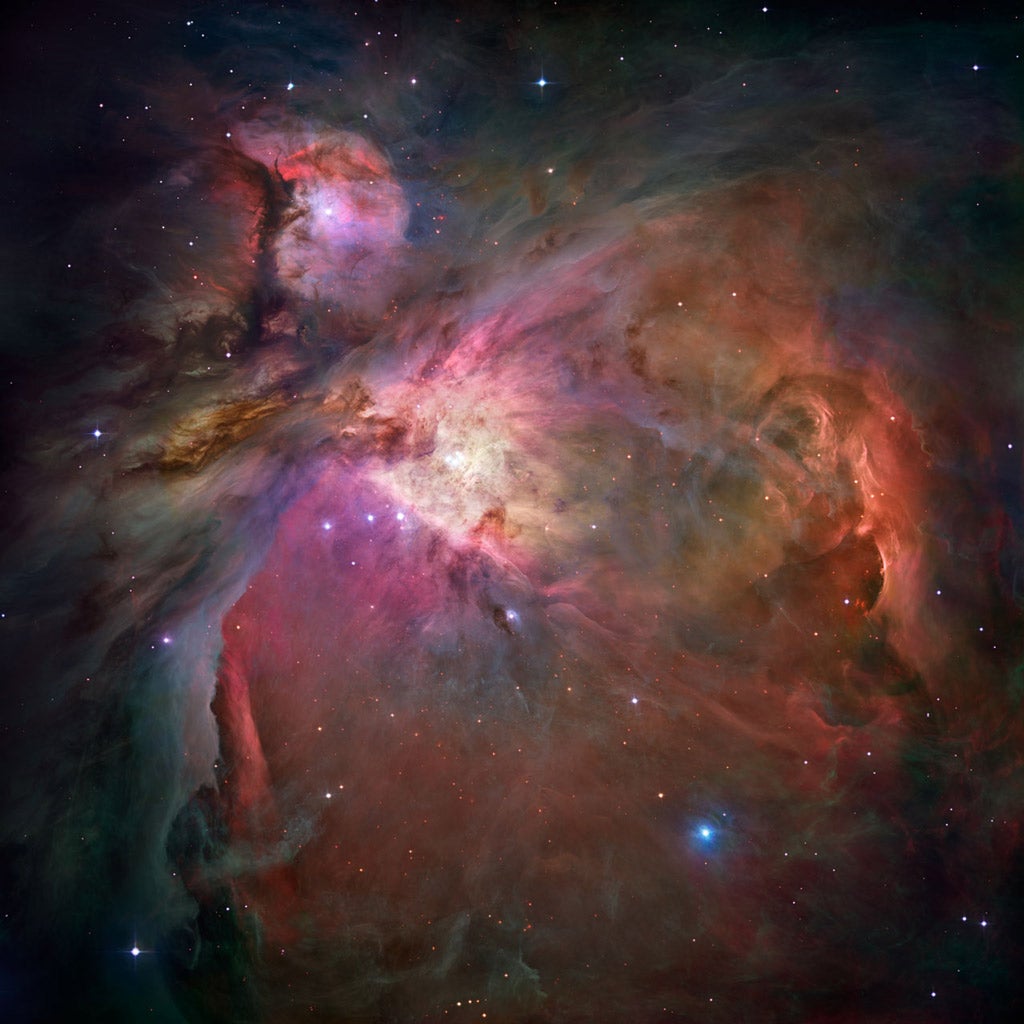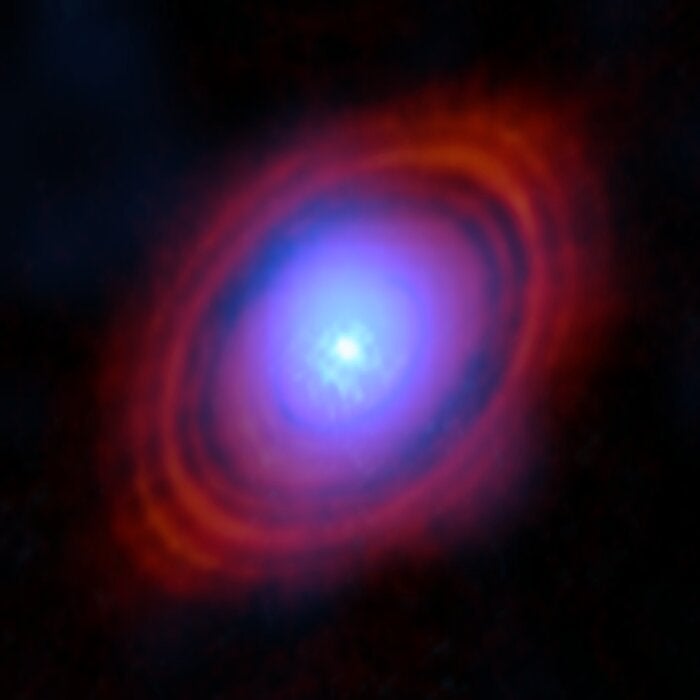“It was very exciting to see this new camera make the night sky look sharper than has ever before been possible,” said Laird Close from UA. “We can, for the first time, make long-exposure images that resolve objects just 0.02 arcseconds across — the equivalent of a dime viewed from more than a hundred miles away. At that resolution, you could see a baseball diamond on the Moon.”
The twofold improvement over past efforts rests on the fact that for the first time a telescope with a large-diameter primary mirror is being used for digital photography at its theoretical resolution limit in visible wavelengths — light that the human eye can see.
“As we move towards shorter wavelengths, image sharpness improves,” said Jared Males from UA’s department of astronomy. “Until now, large telescopes could make the theoretically sharpest photos only in infrared — or long wavelength — light, but our new camera can take photos that are twice as sharp in the visible light spectrum.”
These images are also at least twice as sharp as what the Hubble Space Telescope can make because, with its 21-foot-diameter (6 meters) mirror, the Magellan Telescope is much larger than Hubble with its 8-foot (2.4m) mirror. Until now, Hubble always produced the best visible-light images, since even large ground-based telescopes with complex adaptive-optics imaging cameras could only make blurry images in visible light.
To overcome atmospheric turbulence, which plagues Earth-based telescopes by causing the image to blur, Close’s team developed a powerful adaptive-optics system that floats a thin (1/16th of an inch [0.002m]) curved glass mirror (2.8 feet across [0.9m]) on a magnetic field 30 feet (9m) above the telescope’s primary mirror.
This so-called Adaptive Secondary Mirror (ASM) can change its shape at 585 points on its surface 1,000 times each second, counteracting the blurring effects of the atmosphere.
“As a result, we can see the visible sky more clearly than ever before,” Close said. “It’s almost like having a telescope with a 21-foot [6 meters] mirror in space.”
The new adaptive-optics system, called Magellan Adaptive Optics (MagAO), has already made some important scientific discoveries. As the system was being tested and received what astronomers call “first light,” the team pointed it to a famous and well-studied massive star that gives the Great Orion Nebula (M42) most of its UV light. The Orion Nebula, located just below Orion’s Belt, is visible as a smudge of light even with regular binoculars.
Considered young at about 1 million years old, this star, called Theta 1 Ori C, has been previously known to be in fact a binary star pair made up of two stars called C1 and C2. However, the separation between the two is so small — about the average distance between Earth and Uranus — that astronomers had never been able to resolve the famous pair in a direct telescope photo.
Once MagAO and its visible science camera called VisAO were pointed toward Theta Ori 1 C, the results were immediate.
“I have been imaging Theta 1 Ori C for more than 20 years and never could directly see that it was in fact two stars,” Close said. “But as soon as we turned on the MagAO system, it was beautifully split into two stars.”
In another result, MagAO has shed light on a different mystery: How do planets form from disks of dust and gas affected by the strong ionizing light called stellar wind coming from a massive star like Theta 1 Ori C, which has about 44 times the mass of the Sun?
The team used MagAO and VisAO to look for red light from ionized hydrogen gas to trace out how the strong UV radiation and stellar wind from Theta 1 Ori C affects the disks around its neighboring stars.
“Close to Theta 1 Ori C, there are two very young stars surrounded by disks of gas and dust,” said Ya-Lin Wu from UA. “Theta 1 Ori C pummels those disks with stellar wind and UV light. It looks like they are being bent backwards by a strong wind.”
MagAO’s photo revealed that the two stars and their protoplanetary disks are heavily distorted into teardrop shapes as the strong UV light and wind create shock fronts and drag gas downwind of the pair.
The distribution of gas and dust in young planetary systems is another unsolved problem in planet formation. The team used VisAO’s simultaneous/spectral differential imager (SDI) to estimate the mass of another intriguing object in the Orion Nebula — one of a few stars in Orion sporting a rare “silhouette disk.” The SDI camera allowed the light from the star to be removed at a high level, offering, for the first time, a clear look at the inner regions of the silhouette.
“The disk lies in front of the bright Orion Nebula, so we see the dark shadow cast as the dust in the disk absorbs background light from the nebula,” said Kate Follette from UA. “Picture a moth flying across a bright movie screen — its body will appear opaque, while the wings will be partially transparent. Our SDI instrument allows us to peer into the silhouette and trace how much dust is at each location in the disk based on how transparent or opaque it is.”
“We were surprised to find that the amount of attenuated light from the nebula never reached an opaque point,” she said. “It seems as though the outer parts of this disk have less dust than we would have expected.”
“It is important to understand how dust is laid out in these objects because that dust and gas is what nature uses to build planets,” Close said. “Our new imaging capabilities revealed there is very little dust and gas in the outer part of the disk.”
According to Close, the silhouette disk might have been close to the massive star Theta 1 Ori C at some point, which might have blown away its outer dust and gas.
“This tells us something about planet-forming disks in these dense, stellar nurseries,” Close said. “There appears to be a limit to the formation of massive planets very far away from their parent stars. One possible explanation might be the presence of a massive star like Theta 1 Ori C stripping away the outer gas and dust.”









